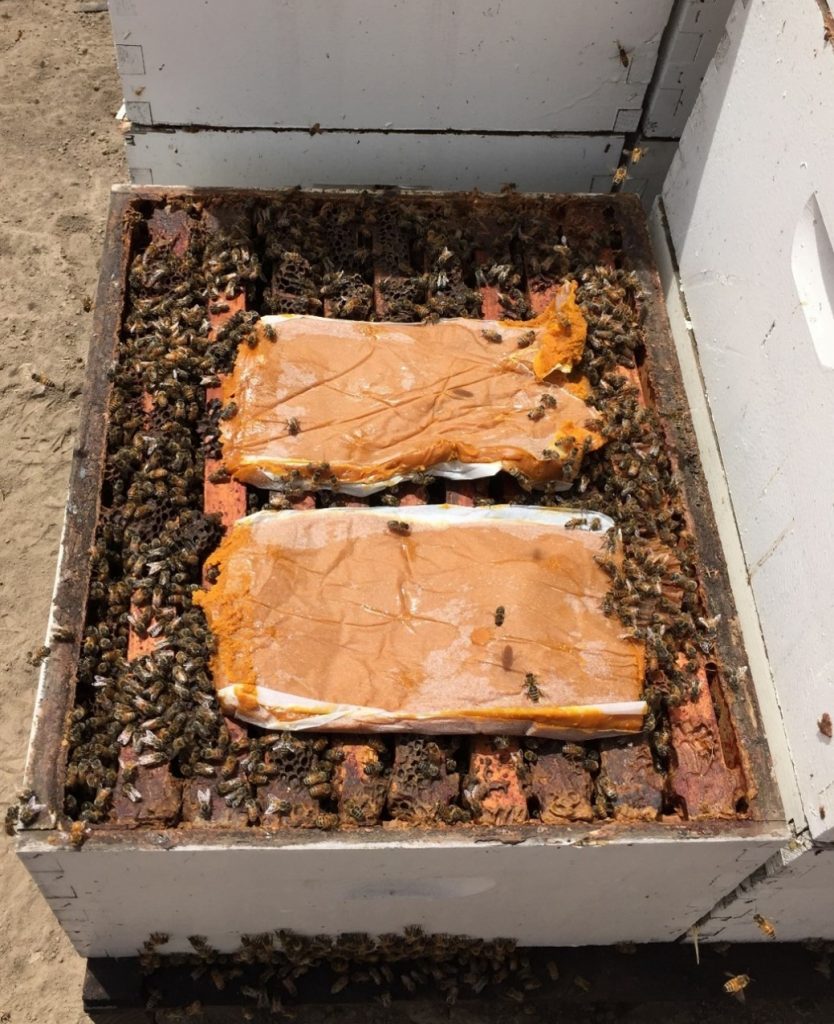Just in time for our early season decision making on what is best to feed our bees is the latest release from the Honey Bee Health Coalition Honey Bee Nutrition Guide . https://honeybeehealthcoalition.org/nutritionguide/ The guide reviews the basic of bee nutrition and serves as a manual for supplemental feeding in bee hives. It is a straight-forward, uncomplicated coverage of the complex and nuanced world of honey bee nutrition. It was prepared by Dr Priya Basu, recently a post doc at OSU and now Assistant Professor at Mississippi State University; Ramesh Sagili and George Hansen were among a distinguished dozen reviewers.
“Understanding honey bee nutrition is no simple task, given the intricate social structure and diverse needs within a colony,” said Dr. Priya in a review for a recent ABJ Extra blog. “The Honey Bee Nutrition Guide addresses these challenges head-on, providing practical insights for beekeepers to navigate the seasonal variations and colony requirements effectively.”
The Honey Bee Nutrition Guide serves as a resource for beekeepers to understand and help them meet, when advantageous to do so, the colony’s nutritional needs now in critical spring buildup and throughout the beekeeping season. Spring begins for the colony as older-aged foragers source and bring back home the floral resources of pollen and nectar. In the absence of these natural resources or weather irregularities keeping foragers from their duties, supplemental feeding can be an essential management. Leaving bees to the mercy of the season is irresponsible in bee colony husbandry.
This new comprehensive Guide delves into the various considerations beekeepers must take into account when deciding if supplemental feeding will be helpful. Such decisions usually will need to include the colony’s brood status, seasonal nutritional needs, and availability of food reserves within hives and resource availability outside. Bee colony care can be complicated nutrition-wise. We should seek to avoid nutritional stress in our bees.
The guide has a neat section on the history of supplementing colonies with diets other than pollen, which dates back centuries. The guide traces this history, highlighting pivotal moments for the first recommendation of supplementing bees (1655), Amos I. Root’s tests with various supplements (1875), the foundational research of Mykola H. Haydak (in the 1950s), advanced into the 1970s by my PhD student Elton W. Herbert, Jr. jointly at the University of Maryland and USDA, Beltsville. Dr Herbert tragically passed away in his prime research years . Unfortunately his efforts at developing an artificial diet was discontinued following his death.
The guide compares the current supplemental proteins and emphasizes the importance of understanding the limitations of artificial supplements compared to the nutritional richness of natural pollen. George Hanson, of Colton OR, Foothills Honey Co, who was a Guide reviewer, is quoted on the ABJ Extra Blog “With practical insights, historical context, and a focus on sustainability, the Honey Bee Nutrition Guide aims to empower beekeepers to make informed decisions for the well-being of their colonies…..This essential resource will undoubtedly contribute to the advancement of sustainable beekeeping practices.”
The Guide includes an overview of micro- and macronutrients as well as carbohydrates. A table gives details on 18 commercially available diets. The section on sugar Supplementation details the various sugars we might feed and the types of sugar feeders. There is a section on pre and probiotics. There is a table that helps guide management decisions on feeding (one for protein one for carbohydrate) by seasons. In 3 appendix sections there is literature reviews of studies on commercial proteins supplements, there are interviews with six commercial beekeepers who each outline what works for them when providing supplemental feeding to their honey bee colonies throughout the year and an extensive listing of relevant literature.
There is something for all level of beekeeper from beginners to those with more experience. It should become part of your winter reading in preparation for this coming bee season.

